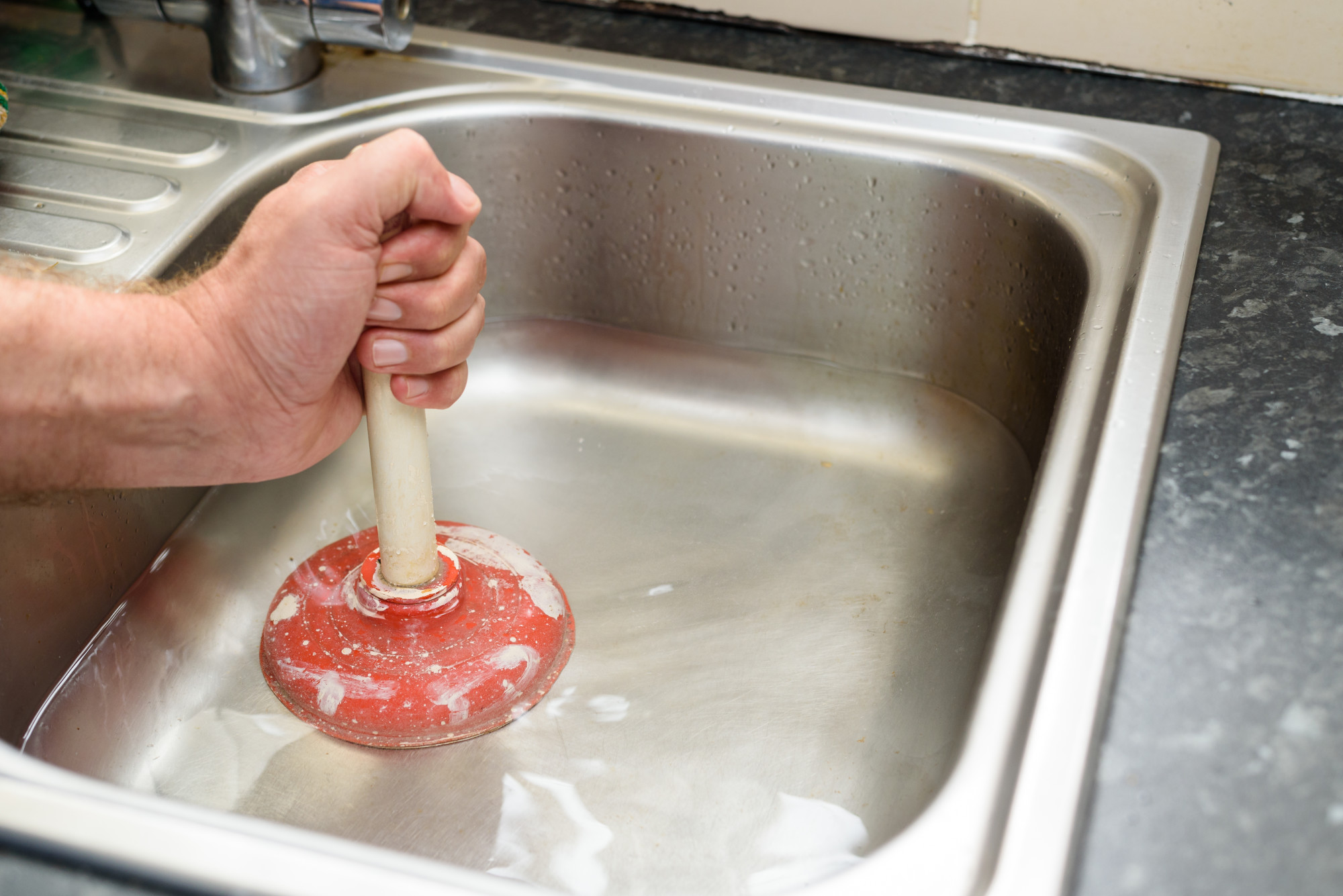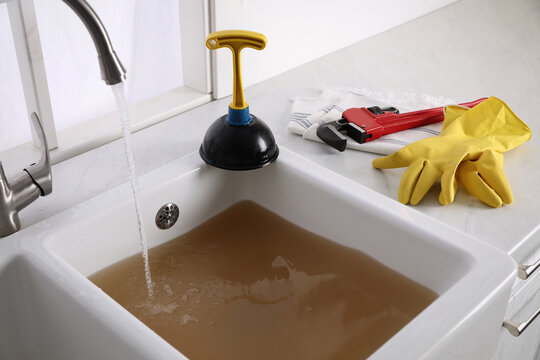How to Successfully Apply Plunger and Drain Cleaner: Professional Insights
How to Successfully Apply Plunger and Drain Cleaner: Professional Insights
Blog Article
This post down below in relation to Here's How to Correctly Use a Toilet Plunger is immensely enjoyable. Try it and draw your own assumptions.

Introduction
Proper maintenance of family drains pipes is vital for avoiding blockages and making sure smooth water circulation. Among the secret tools in every property owner's toolkit is the bettor, alongside numerous drainpipe cleansers developed to take on stubborn obstructions successfully. This write-up explores how to use bettors and drain cleaners successfully to keep your drains flowing freely.
Section 1: Understanding Plungers
Kinds of Plungers
There are several types of bettors available, each created for various types of drains pipes and blocks. The most typical types consist of mug bettors, flange plungers, and accordion plungers.
Just How Plungers Job
Bettors service the principle of producing stress and suction to displace blockages. When appropriately applied over a drain, they produce a vacuum that can take out particles or break up clogs.
Choosing the Right Plunger
Picking the right plunger relies on the type of drain and the nature of the obstruction. Cup plungers are ideal for sinks and bathtubs, while flange plungers are better fit for bathrooms as a result of their layout.
Common Errors with Bettors
Preventing these errors makes sure efficient plunging: incorrect seal around the drainpipe, not enough force, and not clearing bordering debris.
Section 2: Using Plungers Efficiently
Preparation
Prior to plunging, ensure the plunger covers the drainpipe totally and forms a tight seal. Clear any kind of noticeable debris around the drain opening.
Method
Begin with gentle diving movements to develop suction. Increase stress slowly, using a constant rhythm. Repeat as required till the drainpipe gets rid of.
Troubleshooting Tips
If plunging does not function, try changing the seal, using oil jelly for a far better seal, or utilizing a different kind of bettor.
Area 3: Understanding Drain Cleaners
Kinds Of Drainpipe Cleansers
Drain pipes cleansers can be chemical or chemical. Chemical cleansers make use of strong chemicals to dissolve blockages, while enzymatic cleaners make use of all-natural enzymes to break down raw material.
Exactly How Drainpipe Cleansers Job
Chemical cleaners respond with obstructions to liquify them, while chemical cleansers break down natural products like hair and grease without damaging pipelines.
Safety and security Considerations
Constantly put on handwear covers and eye defense when using chemical drainpipe cleansers. Make sure sufficient air flow and comply with supplier directions meticulously.
Eco-Friendly Alternatives
Think about using vinegar and cooking soft drink or enzyme-based cleansers for green options that are more secure for pipes and the setting.
Area 4: Making Use Of Drain Cleansers Effectively
Application Methods
Put chemical cleaners directly into the drain opening. Enable them to work for the recommended time prior to purging with warm water. Chemical cleansers must rest overnight.
Preventative measures
Stay clear of mixing different sorts of cleansers, as this can produce harmful fumes. Never ever make use of chemical cleansers along with a plunger, as splashing can occur.
Dealing With Persistent Clogs
For consistent clogs, consider making use of a pipes serpent or calling a professional plumbing technician to prevent damages to pipelines.
Conclusion
To conclude, understanding just how to utilize bettors and drainpipe cleansers effectively is necessary for maintaining healthy plumbing systems. By picking the right tools and methods, property owners can tackle small obstructions and protect against major plumbing issues down the line.
How To Properly Use A Plumbing Snake To Clear Drains
When any drain clogs in our home arise, we tend to gravitate toward the plunger and little else. In cases where the plunger and its vacuum-created pressure are not able to clear clogs, many immediately move to harmful chemicals or simply call their plumber to fix the issue.
we’re happy to help with all drain cleaning needs and concerns. This includes informing you on a few other home remedies you may have at your disposal for minor to moderate clogs, one of which is the use of a plumbing snake. Many people have never used one of these before – let’s go over the steps to take when your drain clogs and you have a plumbing snake available.
Attempt Plunger Use
The first step here, as we noted above, should indeed be to grab your plunger when you notice a drain clog and attempt to resolve it this way. If you’re unsure how to use a particular type of plunger, our plumbers can answer any questions you have. If this doesn’t do the trick, however, you move on to the snake.
Locate And Prepare Snake
A plumbing snake is a metal or plastic device that’s generally about a quarter of an inch thick. It’s design with significant extensions, meant to reach down into your clogged drain and push the clog out. Snakes also contain drain augers that will latch onto and push stubborn blockages.
If your plunger doesn’t clear a clog, locate your snake and bring it to the drain in question. We also recommend keeping a bucket nearby to collect the clog once you pull it out, plus we’d advise wearing goggles and possibly protective gloves.
Feed Snake
Once you’re ready to go, feed the snake slowly down the drain, using the crank device it comes with to keep it moving until it finds the clog. Once this happens, much of the clog will be latched onto the coil so you can pull it out, while the rest will simply break up and flow downward.
Detach Debris
Remove the snake slowly from the drain, and once you’ve done so, pick off any debris that’s stuck to the coil. This is another area where wearing gloves is a must.
Flush Drain
Finally, take a few minutes to ensure the snake has done its job correctly. If you’ve been using it on a toilet, flush the toilet a couple times and make sure everything flows well. If you’ve used it on a different drain, flush it with some room temperature water.
https://www.mybuddytheplumber.com/blog/how-to-properly-use-a-plumbing-snake-to-clear-drains/

Application Methods
Put chemical cleaners directly into the drain opening. Enable them to work for the recommended time prior to purging with warm water. Chemical cleansers must rest overnight.
Preventative measures
Stay clear of mixing different sorts of cleansers, as this can produce harmful fumes. Never ever make use of chemical cleansers along with a plunger, as splashing can occur.
Dealing With Persistent Clogs
For consistent clogs, consider making use of a pipes serpent or calling a professional plumbing technician to prevent damages to pipelines.
Conclusion
To conclude, understanding just how to utilize bettors and drainpipe cleansers effectively is necessary for maintaining healthy plumbing systems. By picking the right tools and methods, property owners can tackle small obstructions and protect against major plumbing issues down the line.
How To Properly Use A Plumbing Snake To Clear Drains
When any drain clogs in our home arise, we tend to gravitate toward the plunger and little else. In cases where the plunger and its vacuum-created pressure are not able to clear clogs, many immediately move to harmful chemicals or simply call their plumber to fix the issue.
we’re happy to help with all drain cleaning needs and concerns. This includes informing you on a few other home remedies you may have at your disposal for minor to moderate clogs, one of which is the use of a plumbing snake. Many people have never used one of these before – let’s go over the steps to take when your drain clogs and you have a plumbing snake available.
Attempt Plunger Use
The first step here, as we noted above, should indeed be to grab your plunger when you notice a drain clog and attempt to resolve it this way. If you’re unsure how to use a particular type of plunger, our plumbers can answer any questions you have. If this doesn’t do the trick, however, you move on to the snake.
Locate And Prepare Snake
A plumbing snake is a metal or plastic device that’s generally about a quarter of an inch thick. It’s design with significant extensions, meant to reach down into your clogged drain and push the clog out. Snakes also contain drain augers that will latch onto and push stubborn blockages.
If your plunger doesn’t clear a clog, locate your snake and bring it to the drain in question. We also recommend keeping a bucket nearby to collect the clog once you pull it out, plus we’d advise wearing goggles and possibly protective gloves.
Feed Snake
Once you’re ready to go, feed the snake slowly down the drain, using the crank device it comes with to keep it moving until it finds the clog. Once this happens, much of the clog will be latched onto the coil so you can pull it out, while the rest will simply break up and flow downward.
Detach Debris
Remove the snake slowly from the drain, and once you’ve done so, pick off any debris that’s stuck to the coil. This is another area where wearing gloves is a must.
Flush Drain
Finally, take a few minutes to ensure the snake has done its job correctly. If you’ve been using it on a toilet, flush the toilet a couple times and make sure everything flows well. If you’ve used it on a different drain, flush it with some room temperature water.
https://www.mybuddytheplumber.com/blog/how-to-properly-use-a-plumbing-snake-to-clear-drains/

I'm just very taken with Tips on How to Effectively Use a Plunger and I am praying you appreciated our piece. Feel free to set aside a second to share this page if you enjoyed it. Thanks so much for your time invested reading it.
Get A Quote Report this page